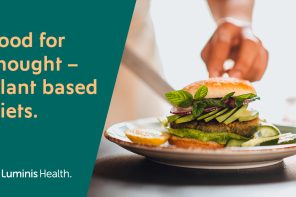There’s a lot of discussion about the importance of probiotics, “good” bacteria and the role they play in aiding digestion and balancing out the bad bugs in your gut.
Research is hinting that probiotics may help treat diarrhea, boost your immune system for fighting colds and flu, help prevent allergy symptoms, treat irritable bowel syndrome and prevent and treat yeast and urinary tract infections, among other things. However, effects can vary from person to person.
These active cultures seem to pack a powerful punch, but there are things you should know before you invest in probiotics.
Let Food Be Your Source
Just like your vitamins, the best source for probiotics is through their natural occurrence in whole foods, not supplements. Not only are supplements costly and unregulated by the FDA, there are questions surrounding the amount of probiotics your body can absorb through supplements.
Dairy items with live and active cultures are rich in probiotics, as are pickled or fermented foods. Probiotic-rich foods include:
- Yogurt with live cultures
- Kefir (a cultured dairy drink)
- Pickles
- Sauerkraut
- Kimchi (a fermented Korean side dish)
- Tempeh (a fermented Indonesian vegetarian patty)
- Pickled vegetables
- Live cultured salsa
- Aged cheese, like cheddar, gouda, parmesan and swiss
- Assorted beverages such as kombucha tea
A wide assortment of probiotic-enriched foods have jumped into the market—like juices, cereals and snack bars—but you should use caution with these as the organisms may be decayed and of little health value.
Keep Them Alive
The benefits of probiotics come from live organisms, so proper storage and shelf life are key to gaining their maximum benefit. Make sure you follow instructions for refrigeration, as well as use items before their expiration date in order to maintain potency. The probiotics won’t work if they’re dead when you use them.
Pair Them With Prebiotics
Did you know probiotics like food, too? Prebiotics are the food of choice for probiotics. They are dietary fiber that’s nondigestible and able to pass on to the gut to help good bacteria flourish. Prebiotics can be found in foods like:
- Whole grains
- Bananas
- Jerusalem artichokes
- Asparagus
- Onions
- Leeks
- Garlic
- Honey
- Chicory root
Unfortunately you won’t find prebiotic fiber listed on labels for products with whole grains, so it’s easiest to focus on boosting your overall fiber intake.
Also, prebiotics do not have to be eaten at the same time as probiotics, but there are some great combinations you can put together, like sliced bananas added to your yogurt. Fresh asparagus pairs nicely with tempeh or kimchi.
Is There Too Much of a Good Thing?
Still considering taking a probiotic supplement? Probiotics aren’t necessarily needed every day like a multi-vitamin, and there are some people, like those who are immunosuppressed, who may need to be careful about how much they take.
If you’re considering a probiotic supplement in addition to or instead of adding probiotic-rich foods to your diet, check in with your doctor. There may be specific strains that would benefit you more and guidelines for how much and how often you should take the supplement. Also, since the FDA does not regulate probiotic supplements, your doctor or registered dietitian can steer you toward a reputable product.





